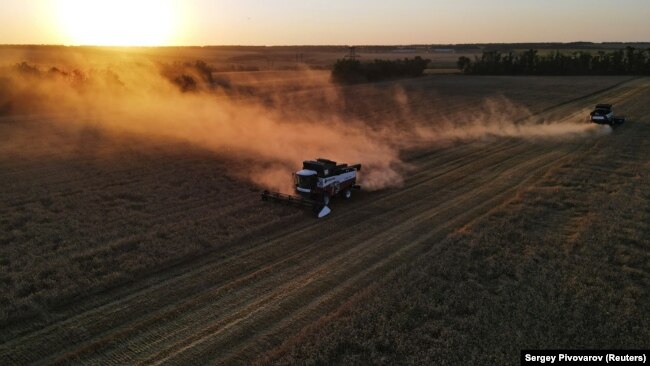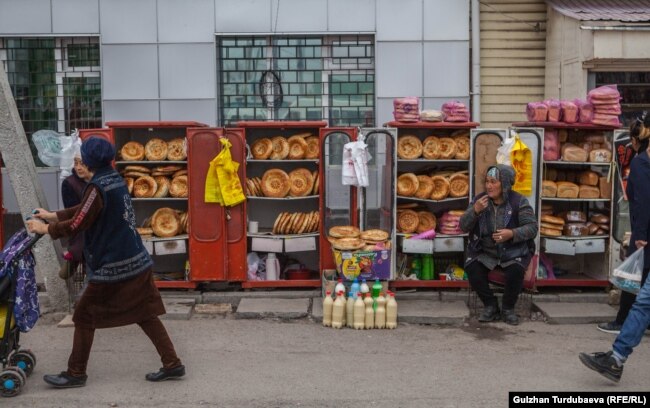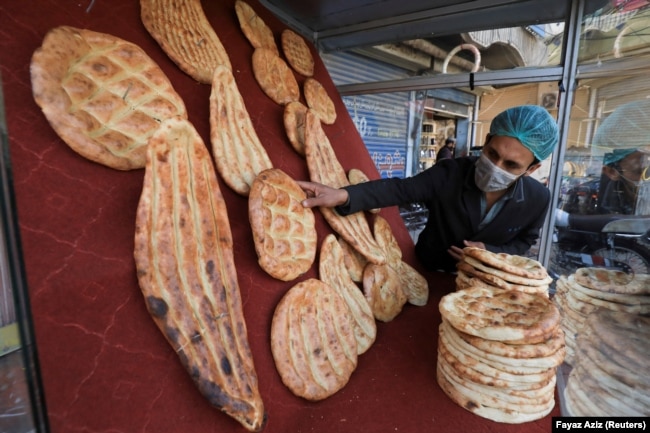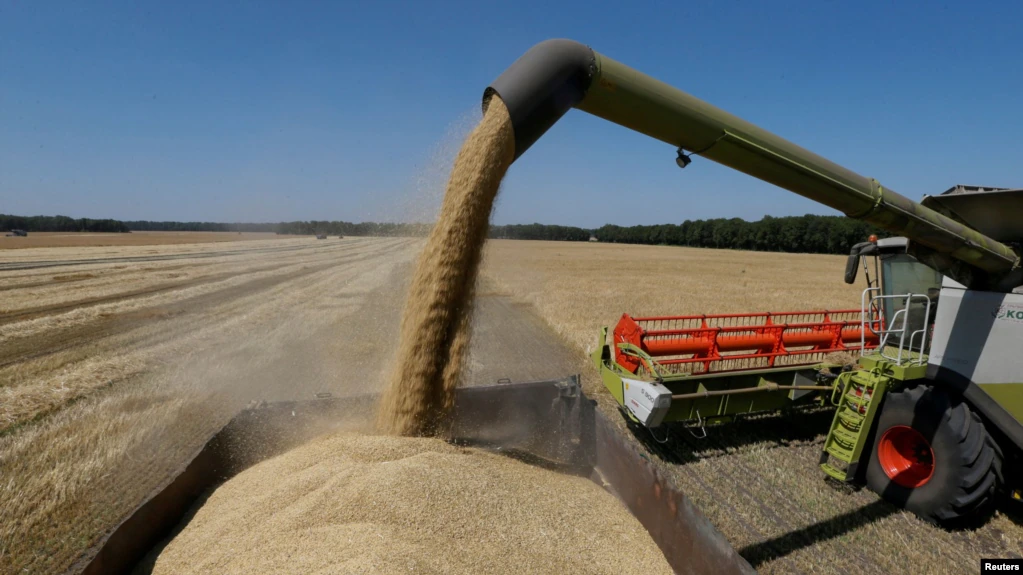The effects of the war in Ukraine are already being felt across the world, from rocking world energy markets to spurring a growing refugee crisis in Europe.
But the conflict could have more ripple effects, including sparking a global food crisis.
Russia and Ukraine account for roughly 30 percent of global wheat exports, while Russia is the world’s top exporter of fertilizer and a vital amount of the world’s wheat, corn, and barley is trapped in both countries because of the war, while an even larger portion of the world’s fertilizers is stuck in Russia and Belarus.
The simultaneous disruptions to harvests and fertilizer production are driving up food prices and sending economic shock waves throughout the world. Since Russia’s February 24 invasion, world wheat prices have increased by roughly 21 percent, barley by 33 percent, and some fertilizers by as much as 40 percent.
After more than a month of war, economists and aid agencies say the world is facing merging crises that could lead to a global food emergency.
Food and fertilizer prices were already climbing to record levels before the conflict due to shipping constraints, high energy costs, and natural disasters. Supply was further strained in the early weeks of the war with Moscow limiting wheat exports and urging its fertilizer producers to temporarily suspend exports. Kyiv also banned exports of wheat and other staples.

As the fighting continues and shows no signs of stopping, could the Ukraine war be at a tipping point for a global hunger crisis?
To find out more, RFE/RL spoke with Alex Smith, a food and agriculture analyst at the U.S.-based Breakthrough Institute, a think tank focused on environmental issues.
RFE/RL: Explain how the war in Ukraine is connected to global food supply and prices and which parts of the world will be the hardest hit and why?
Alex Smith: The main way that the Russian invasion of Ukraine can impact and alter food prices and the world food supply is through the disruption of Ukrainian agricultural exports.
Ukraine — and Russia as well — are massive exporters of grain to the world, specifically wheat, corn, barley, as well as a number of different kinds of plants and seed oils. Ukraine is the fifth-largest wheat exporter and the third-largest corn exporter in the world and they export wheat in particular to a lot of developing and lower-middle-income countries in the Middle East, North Africa, [and] South and Southeast Asia.
So if we are to see a continued disruption of [those] wheat and corn exports, we’re likely to see high food prices, but also acute food shortages in specific places.
We’re already seeing high food prices. I’m sure most people are aware of this to some degree. Disruptions in Black Sea trade, which is responsible for about 90 percent of Ukraine’s grain exports, has turned commodity traders and the world food market upside down.

We [already] had record highs in late February [and] early March for wheat. Corn is up very high in price and this is even before we’re feeling [the] real structural disruptions in Ukrainian agricultural production [from the war].
Ukraine is still a couple months away from their 2021-2022 wheat harvest and we’re not seeing any [of the] disruptions yet in terms of Ukrainian planting. But just in terms of disruptions to the exports going out right now, we’re seeing a lot of fear [and] a lot of worry about countries that are really dependent on that agricultural supply.
RFE/RL: You mentioned higher food prices, but what are the big picture economic risks that this brings? And how will it affect people around the world? Or is it already being felt?
Smith: I think there’s potential for high food prices globally from this. As you get constrictions on global food supply, that increases demand for food from other places. Whether it’s wheat from Argentina or corn from the United States, that can take [any given] export away from another country that’s interested in this product.
In countries that are extremely reliant or dependent on Ukrainian food production — countries like Lebanon, for example — which relies on Ukraine for about 50 percent of its total wheat supply, or Libya, which again, [around] 43 percent of their wheat comes from Ukraine, this [places a] really severe burden on people who are already hungry [and] who are already struggling to pay for food. And with that you see a number of other general cost-of-living increases.
There are already people who are hungry who are now going to have to pay even more for the small amount of bread that they can afford.
RFE/RL: What are some of the ripple effects that could be set off by this, especially when combined with other political and economic factors and crises around the world?
Smith: I think we’re still early in this crisis. The war has been going on for a month or so [and] we’re yet to see these big structural challenges to Ukrainian agricultural production. We were seeing for a little while disruptions in Russian agricultural trade as well, where Russian ships were not getting through the Black Sea. [But] I think some trade has resumed, although it is [still] unclear, [as] a lot of information is not exact.
But if the war continues [and] if there are severe disruptions of either [the] harvest or planting season in Ukraine and if you’re seeing further economic turmoil in Russia from the war that could [result in] them banning grain exports, as they’ve done already in the past, [such as] in 2020 and in 2010…then this crisis could grow.
Russia has already banned grain exports to former Soviet countries until the end of June. If that ban becomes a global [export] ban from Russia on grain then you could see a really severe shortage. Ukraine and Russia together make up about a quarter to a third of the world’s wheat exports. So, if you take out a quarter or a third of all of the [world’s] wheat, it’s a really significant portion that can’t necessarily be filled from [other exporting] countries like India, or the United States, or Australia, or Argentina that are aiming to substitute this demand.

[When] you start adding on [the effects] of other conflicts or crises [around the] world, it gets worse.
China, for example, [has] been noisy recently about having a very bad wheat harvest. I think China’s wheat harvest is maybe the worst in recent history. Add on to that the extremely high cost of fertilizer, that is also related to the war, then you see multiple factors driving both production and supply of crucial agricultural commodities, like wheat and corn, [and] also an increase in the price of every single agricultural commodity due to the increase [in the price] of fertilizer.
I think we’re still too early to say this or that is going to happen. But we’re getting to a crossroads this summer where all of these crises overlap with other crises that could lead to real, severe food shortages in certain places and [see] global food prices at a level that we haven’t seen since the 1970s.
RFE/RL: Given that the war doesn’t show any signs of slowing down, what can be done to offset some of these shocks that you’ve outlined already?
Smith: I think the first thing you can look to are international food-aid organizations. The standard bearer for that is the UN World Food Program.
[But] they are also in trouble [due to] the war because they source from Ukraine about 50 percent of their grains that they would then use as food aid. They were already seeking out new sources of food and with global food prices having already been high prior to the war, they were unable to fulfill the goals that they had set out prior to 2022 in terms of purchasing [grains] and feeding as many people as possible.
Their budget is totally dependent on voluntary donations from states and individuals and other organizations. So something that can be done is that the [countries] who are able to pay more, [such as] the United States, the United Kingdom, Western European countries, [and] countries that are major agricultural exporters already, they can give more money to the UN World Food Program pretty easily.

It [doesn’t have] a huge budget — I think the United States gives something like $6 billion a year to the UN World Food Program — but leveling this amount up so that there is this possibility for really strong food aid would be helpful.
And also countries that are major massive producers [can help] to substitute this loss of grain.
China, for example, is [having] low yields this year for wheat, [but] they still have very large grain reserves that they can open up and export themselves. Same thing goes for India, [which has] a very large grain reserve because they’ve been a very large producer of wheat for decades now and they could open that [reserve] up and send that out to the world in a way that is not dependent on their yields [from] this year, but is linked to yields [from previous years].
Altogether, there’s more than enough capability to fill this shortage. It may be costly as food prices go up, but it is necessary.






